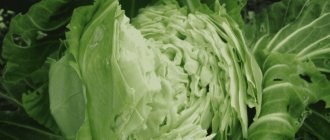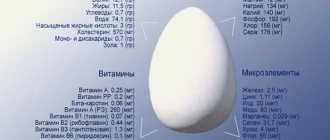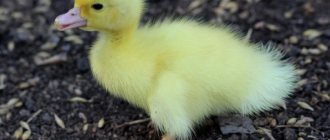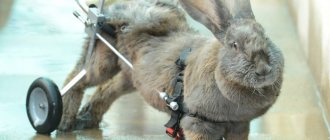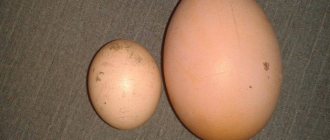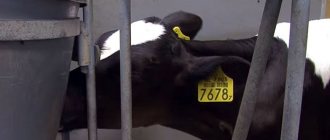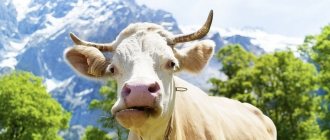Home » Articles about chickens » Why does a rooster trample a chicken?
The situation when the rooster began to trample the hens means his “coming of age.” That’s right, because adult birds of both sexes differ from young ones not only in size and appearance, but also in the demonstration of sexual behavior. It is important for a poultry farmer to understand this area of bird life, as it has many features that affect reproduction and even the safety of the livestock.
Mating process
Chickens are birds that live only in flocks and never alone. Any flock has its own rooster - the leader. The leader has access to any chicken at any time and can trample them as many times as he needs. If this right is somehow limited by other males, then fights occur, sometimes ending in bloodshed.
Ritual games are an important stage in the mating process. The rooster does not immediately trample the hens, at first he usually spins around the female and begins to lower one wing. After some time he begins to stomp. During the mating process, the rooster jumps on the hen, tramples her and with his beak grabs the female by the feathers on the back of her head.
We invite you to find out what mushrooms grow under pine and spruce trees
Chickens reproduce using the cloaca, an expanded part of the intestine that opens outward through a hole under the tail. When a rooster tramples a hen, the birds' cloaca is everted and the rooster's testes come into contact with the hen's cloaca. At the same time, seminal fluid is released, which enters the female’s genital tract.
Mating proceeds very quickly, this process is repeated quite often. A healthy male is capable of mating up to 22 times a day, and the quality of the sperm depends on the frequency of this process. If a rooster tramples hens too often, the sperm concentration decreases significantly. And, conversely, with a decrease in the number of copulations, the concentration of germ cells in the seminal fluid increases.
Fertilization is carried out using the cloaca - an expanded part of the intestine. The structure of the reproductive system in males consists of two whitish-yellow testes with excretory canals leading to the intestine. The reproductive organ in chickens consists of a grape-shaped ovary, which is connected to the cloaca by a special canal - the oviduct.
Mating of domestic birds lasts a matter of seconds:
- The male jumps on top of the hen, firmly holds the withers with his beak, moves his paws along her back and makes several quick frictions. In common parlance this process is expressed with the phrase “The rooster tramples the hen”;
- During the love ritual, the intestine is everted, opens the testes and comes into contact with the female’s cloaca;
- At this moment, seminal fluid is released into her genital canals from the male glands, which is necessary for the appearance of future embryos.
Chickens reproduce through the cloaca, a wide part of the intestine located under the tail that opens during copulation.
During mating, the rooster's testes touch the hen's cloaca, which is accompanied by the release of sperm and the entry of seminal fluid into the female's genital tract.
The activity of the seed remains for 21 days (eggs laid during the specified period of time are used to produce offspring).
A healthy rooster has up to 22 matings per day. An increase in the number of copulations worsens the quality of the seminal fluid entering the female’s reproductive organs, while a decrease improves it.
Why are fertilized eggs better than unfertilized ones?
In terms of taste, external and other qualities, a fertilized egg is no different from an unfertilized one. Both types of products are suitable for nutrition and it is impossible to distinguish one from the other.
But there are many myths about the characteristics of fertilized eggs, claiming their special magical, energetic and nutritional value. All these speculations have been debunked by facts - conducted scientific research. The results prove that the energy and nutritional value of both types of eggs is the same.
It is impossible to produce offspring from an unfertilized one. Neither by incubation, nor from under the hen. All attempts to go against nature will be unsuccessful. It is for the reason of obtaining offspring that a rooster is needed on the farm. On average, one male is enough for 10-12 chickens.
Sometimes farmers have a question: why don’t roosters trample chickens? This depends on many reasons, but primarily on age. For an aging “chicken coop owner,” it is recommended to have an assistant—a younger male.
It is not recommended to keep a significant number of males in the herd, higher than recommended. This will lead to fights between them.
For 12-15 hens, they get two roosters: an old one and a young one. In this case, you can expect order in the chicken coop and fertilization of the eggs.
Can a hen lay eggs without a rooster?
The chicken’s body functions in such a way that in order for eggs to appear, it only needs to reach maturity. It can occur between 5 and 8 months of age, depending on the breed. Immediately after reaching sexual maturity, the chicken lays eggs.
Their size, shell color, and frequency of appearance depend on several factors:
- Breeds;
- Diet;
- Conditions of detention.
In order to lay an egg, a chicken needs no more than 2 days.
The formation process occurs as follows:
- The egg matures in the ovary;
- It leaves the follicle and enters the oviduct;
- The formation of the egg begins in it: the yolk, white and shell appear;
- Upon completion of the process, the egg begins to move towards the exit outside.
In order for the process of laying eggs to occur regularly, the hen does not need a rooster. Her body itself performs the tasks assigned by nature.
The male is necessary for the fertilization process, after which the embryo, the future chicken, begins to develop in the egg.
Chicken mating games
Mating between a hen and a rooster always begins with foreplay.
It looks like this:
- The male flirts with the female he likes, demonstrating his attention;
- He walks around her, beckons for the worm he has found, and defiantly scratches his wing with his foot;
- After this, he tramples the female and carries out insemination.
The love games of birds continue throughout the year and stop only during the molting season. During the natural loss of plumage, roosters do not want to trample hens and show aggression towards them: they bully, beat and drive them away from feeders as the leader of the flock.
During this period, the chickens are left to their own devices. After the plumage is renewed, the male's good spirits return, and he again begins to flirt with his girlfriends.
An increase in the number of matings reduces the concentration of seminal fluid and reduces the percentage of fertilized eggs. To increase the likelihood of conceiving new embryos, the rooster should be limited in the number of copulations.
Chickens are gregarious birds that live exclusively in groups. In each such family group there must be a leader - this is the largest male who is able to defend his rights by force. Indeed, there are fights between males for primacy, and quite fierce ones. Sooner or later, the younger rooster defends the right to be the leader of the flock, and the old leader retires.
True, these processes are disrupted during molting. Then the rooster can beat the females, drive them away from food, and the hens’ reproduction stops. But after the end of the molting period, everything gets better and returns to normal.
The expression “a rooster tramples a hen” is common due to the fact that the female has a hole on her back and the rooster, moving his paws over it, tries to find it in order to understand whether he was aiming correctly. The picture of sexual intercourse itself is quite rigid; fertilization in birds is a unique process. The rooster is on top and holds the female by the back of her head with his beak.
This process is short-term and often repeated. If a male is abnormally active in terms of sexual activity (about 22 matings per day), then this can reduce the concentration of his seminal fluid by half. If the number of copulations is limited, this will increase the percentage of fertilized eggs, as well as the viability of future chicks.
Functions of a rooster in a chicken coop
The main function is reproductive. But a cockerel is necessary not only for the purpose of producing young animals.
The leader has many roles:
- He keeps order in the chicken coop and prevents squabbles between the chickens.
- He is the leader of the livestock, protects it from attacks by birds of prey and warns of dangers.
- It has been noticed that smart roosters teach hens to lay eggs in nests and help them get used to the roost.
- The males feel like mentors and make sure that all the chickens are well-fed.
- Those hens who have the habit of running away from the yard are punished.
Another function of the leader is to promptly wake up his family. When the rooster starts crowing, the hens wake up and start looking for food.
But with all the advantages, having a rooster in the chicken coop also has its disadvantages. And above all, this is the “alarm clock” function.
It is difficult to give a definite answer to the question of how many months do roosters crow. It all depends on the breed and temperament of the bird.
But on average, young males begin to show their singing talent at 4-5 months. To understand what time roosters crow, they are interested in the characteristics of this breed. Among the disadvantages of the presence of males in the chicken coop is such a quality of their character as aggressiveness. There are roosters that consider all strangers who come into their field of vision to be potential enemies. Including people who may also be attacked.
If there is a leader, the appearance of the chickens will always be slightly shabby. Laying hens will be active in hatching eggs, which is not always beneficial to the owner.
Related publications
Cardiovascular diseases of cats and dogs: how...
Jul 27, 2020
How to choose a cabinet
Jul 24, 2020
It has been noticed that without a rooster, chickens lay eggs better and their maternal instinct weakens, which has a positive effect on productivity.
